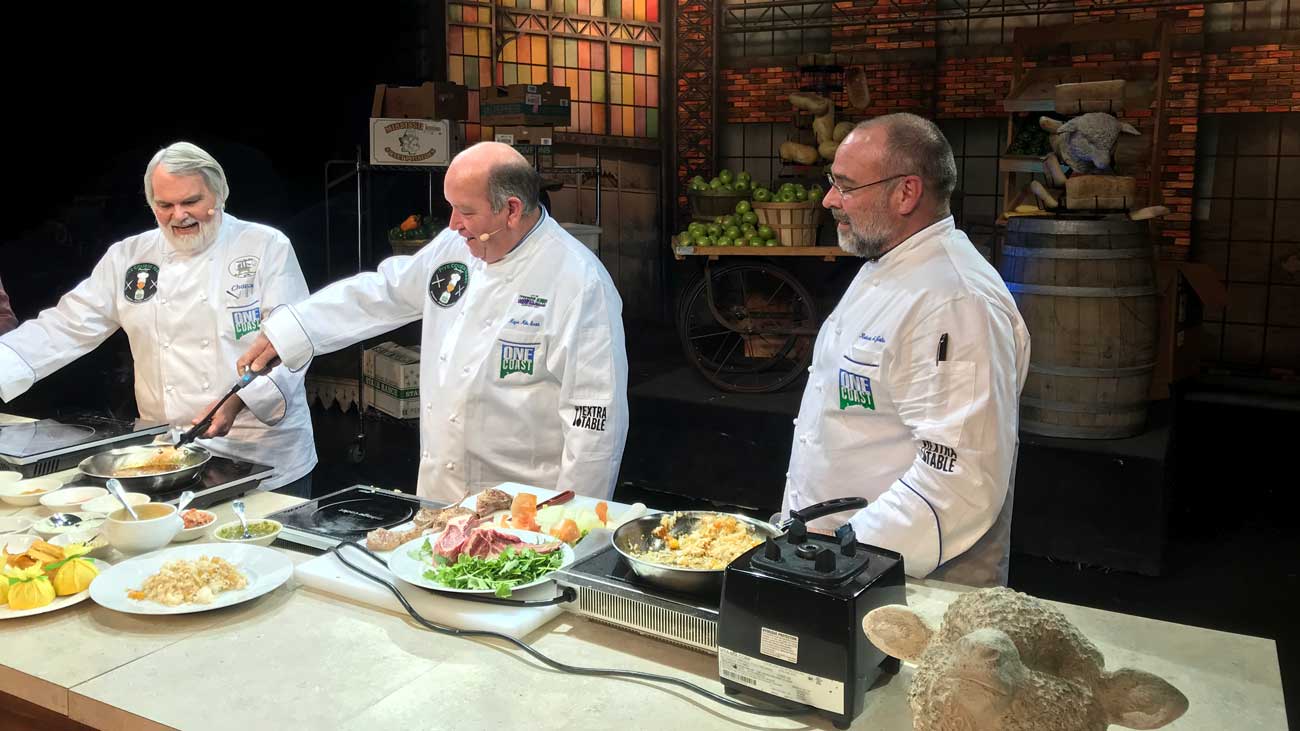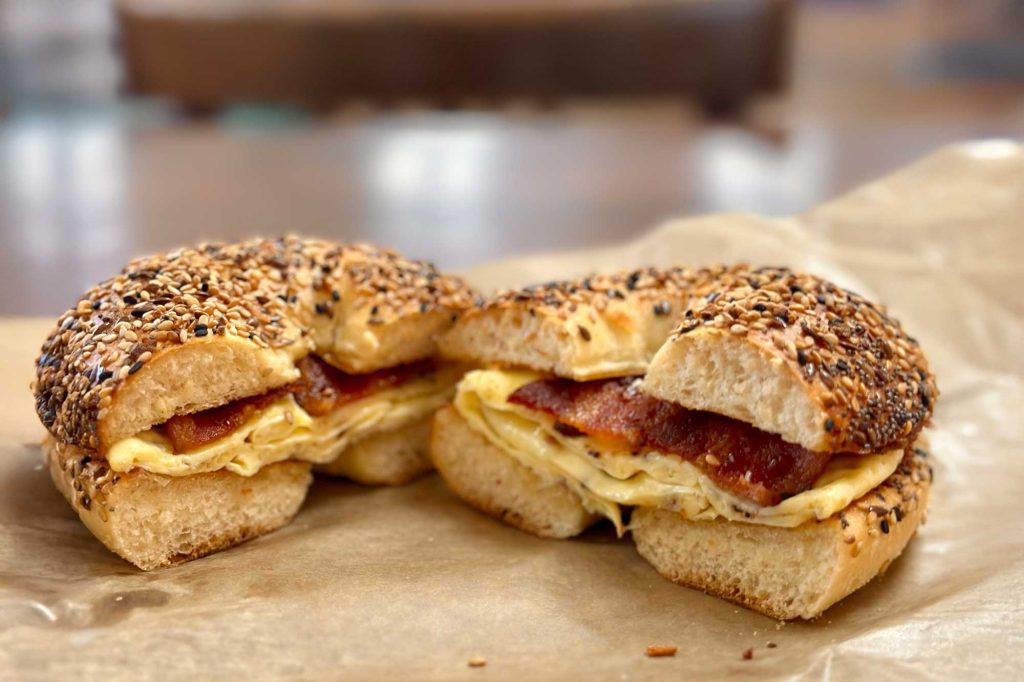CHAPEL HILL, NC— Many argue that the Southern culinary renaissance originated at Crook’s Corner restaurant in this North Carolina town, and that the movement was forged by one chef, Bill Neal. I wouldn’t disagree.
Fellow Mississippian, and longtime food editor of the “New York Times,” Craig Claiborne put the small café at the end of West Franklin Street on the map when he wrote about Neal’s shrimp and grits in the mid 1980s. Another fellow Mississippian, Chef John Currence, worked there, first as a dishwasher, then as a line cook, and brought shrimp and grits back to the Deep South.
Bill Smith took over the reins from Neal and still works the restaurant, today.
Travel assignments for Extra Table landed me in Chapel Hill this week. It was a quick fly-in-late-one-day-and-fly-out-early-the-next-day sort of trip. I had one meal to plan. It might have been the easiest travel-dining strategy I have ever created— Crook’s Corner.
I was travelling with two companions— one who knows how I eat when dining out while doing research and development, and another who learned pretty quickly that the table tends to get crowded with plates on these expeditions.
The meal kicked off with a green peach salad lightly dressed with black pepper and mint, followed by a tomato tart, a plate full of perfectly spiced jalepeno-cheddar hushpuppies and a West Indies Salad. As I was eating the West Indies Salad, Smith walked out of the kitchen and we struck up a conversation. As it happens, the last time I visited with him I was lecturing on West Indies Salad at the Southern Foodways Symposium in Oxford. He nailed it.
As an entrée I chose the Carolina Sampler which was a plate piled high with Hoppin’ John, collard greens, a huge, stellar wedge of back-pepper cornbread, and some of the finest Carolina vinegar-sauced barbeque I have ever tasted. The North Carolinians get it right when they don’t douse smoked meats with gobs of tomato-based sauce. It was perfect.
The neophyte to the St. John travel-dining scene ordered the same as me and our other companion ordered shrimp and grits— when in Rome.
When I can’t make up my mind between two entrees, I order a second “for the middle of the table,” so everyone can share. The gesture seems generous in theory, but actually it’s a selfish move on my part and a way to eat like a pig without having to appear as one— shared gluttony can be a beautiful thing.
For dessert I ordered a fried peach pie and it was very good. We also ordered lemon pie, a chocolate soufflé cake, and a mayhaw snow cone that was more inspired in concept than in application. I then ate the most brilliantly prepared banana pudding I have ever eaten. Period. One might think that banana pudding is banana pudding, an old stand by never differing from the next. At Crook’s Corner, one would be wrong.
I know exactly where I was when I ate the best lamb of my life. The same goes for the best fish dish, the best foie gras, the best risotto, ad infinitum. I know now— to the exact minute— where I was when I ate the best banana pudding I have ever tasted: 8:14 p.m. Eastern Standard Time on July 28th at Crook’s Corner restaurant in Chapel Hill, North Carolina.
The amazing thing about the preceding paragraph is that the banana pudding wasn’t even the best dessert on the table— not by a long shot. That lofty distinction is reserved for Smith’s—cue the choir of angles— honeysuckle sorbet.
Seriously, honeysuckle sorbet. I am obviously one of the last food lovers on the planet to learn about honeysuckle sorbet, as a quick Google search provided several dozen articles, interviews, recipes and videos featuring Smith’s signature dessert.
When I saw it on the menu I was skeptical. Sitting in this bastion of all things southern, I thought: Sure that makes sense. It doesn’t get more southern than honeysuckle. I assumed it would be some type of sweet ice with a hint of honeysuckle flavor derived from something else— something that would yield more juice or nectar than a tiny honeysuckle flower and one whose flavor came close to the honeysuckle profile but didn’t quite hit the mark— but I was wrong. It tasted exactly like honeysuckle used to taste when I was a kid and would spend 45 minutes on a fence row picking honeysuckle flowers and savoring the solitary drop of sweetness from the stamen.
Honeysuckle sorbet, it was inspired and it was a perfect finish.
The south has many chefs carrying the torch. Many have been in the forefront of the movement since the 1970s. At the end of the day, when all is said and done, Bill Smith will be considered one of the finest.
Bill Smith’s Honeysuckle Sorbet
Ingredients:
5 2/3 cups cool water
4 cups honeysuckle blossoms, tightly packed but not smashed*
2 cups sugar
1 2/3 cups water
Few drops lemon juice
Dusting of cinnamon
Directions:
Add cool tap water to flowers. Place in a nonreactive container (glass or stainless steel) and let stand on the counter overnight.
The next day, make a simple syrup by heating sugar and 1 2/3 cups water in a saucepan over low heat until the mixture is clear, then boiling it for a minute or so, until the syrup begins to appear lustrous and slightly thick.
Remove from heat and add a few drops of lemon juice to prevent the sugar from recrystallizing. Cool the syrup.
Strain the honeysuckles, gently pressing the blossoms so as not to waste any of your efforts.
Combine the honeysuckle and the simple syrup and add just the merest dusting of ground cinnamon — a hint will enhance the honeysuckle flavor; even a bit more will overpower it.
Put the mix in a glass baking dish, let it freeze a little, stir and smash with a fork. Wait another couple of hours and do the same thing until it’s almost frozen through, then put it all in a blender so its gets nice and snow-like. It need to be taken out of the freezer a few minutes before you serve it.
OR if you have an ice cream freezer, churn it according to the manufacturer’s directions.
Makes 1 generous quart.
* Note: Four cups of flowers is the least you will need to make this worthwhile. If you’re using more, adapt the ingredients as follows: Use 1 2/3 cups water for each cup of flowers for the initial infusion. For the syrup, use 2/3 cup water and 1/2 cup sugar for every cup of flowers.



